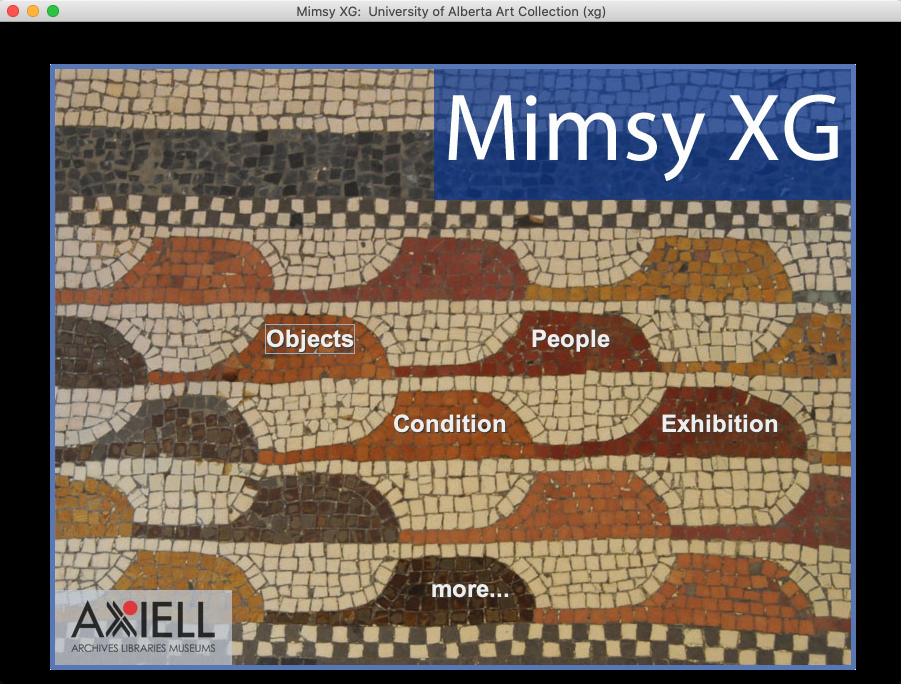UAM Summer Internship Blog 2021: The Unseen World of Data

Landing page for Mimsy XG. A door to where all the data lives!
Who knew that data is as important as actual museum objects and specimens? I certainly did not. During the first half of July, I worked with the data management software Mimsy XG to research and provide helpful resources to users and visitors of the University of Alberta Museums (UAM) collections.
Mimsy XG is a collections data management software program that catalogues, manages, and organizes museum objects and specimens. Information regarding museum objects, specimens and their activities, and movements (e.g., acquisition, exhibition, conservation, etc.) into, within, and out of collections are entered into Mimsy. Data entered into Mimsy is then linked to the UAlberta Museums Search Site as individual records for public access. Mimsy XG is in itself a very useful tool, but in order for UAM to utilize the software to benefit and encourage research and information/knowledge discovery, we are constantly looking for ways to present and provide more information for students, researchers, professors, and the public.
UAM Mimsy XG gurus are Emily and Katherine, Collections Management Advisors for Humanities and Natural Science collections, respectively. They organize, develop, configure, and manage information within Mimsy to support collection management and people who access information regarding UAM collections.
For the last two weeks, I worked closely with Emily on the Mactaggart Art Collection External Link Data Project which incorporated several aspects: data-entry, editing, and cataloging in Mimsy, and researching useful online links on Mactaggart artists to be kept in Mimsy and also displayed on the UAM Search Site. This project is carried out to explore a new data field that is being utilized on the Search Site, External Links. External links will provide appropriate and related web links to external, publicly accessible, websites regarding our object/specimen records to enhance and aid research and information discovery.
Through this project, I had hoped to become familiar with the ins and outs of data management in museum settings. Although I was using Mimsy XG in searching for information on certain artworks and artists prior to this project, I was not aware of its full potential. As the URLs for External Links first need to be entered into the database in order to appear on the Search Site, the project began by creating mock records in a Mimsy test database to understand data-entry and editing. Then, after the project meeting with Emily and the Mactaggart Art Collection team, Isabel (Pi-fen) and Sarah, I began researching Mactaggart artists using various online resources such as Getty Union List of Artists’ Names. I would like to take this opportunity to thank Emily, who helped and taught me throughout the whole process. Without her kind answers to my many questions, the last two weeks would have been spent in data misery. I would also like to thank Isabel and Sarah for their helpful advice and guidance on artist research.
The data-handling experience I had through this project was a brief one, but it was enough to give me an understanding of where the data lives and how it is handled by museum workers to be useful. Through the process, I have come to realize that I would not be able to locate an object without the data information system – an arduous job done graciously by the team at UAM and any other cultural institutions. Also, as my interest lies with East Asian art and artwork on paper, researching useful weblinks on Chinese artists over a broad timeline from Ming to Qing dynasties (roughly 14th to 20th century) was fun. As much as I enjoyed researching links, I hope you will also enjoy exploring the external links that will soon be available on Search Site.